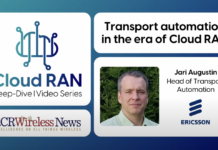Call center analytics and customer interactions among key telco AI use cases being discussed in boardrooms
In the latest of our ongoing Telco AI Deep Dive series, Capgemini Americas Principal and NA Lead, AI & Analytics, Ajay Mohan draws on the firm’s own research around generative artificial intelligence (gen AI) to give a snapshot of the internal and customer-facing telco AI use cases operators are considering to bring efficiency to their businesses.
Speaking generally about how enterprises are thinking about this latest technology revolution, Singh said, “Most of these organizations have plans to leverage gen AI in some capacity across their operations…Definitely seeing a lot of interest in what gen AI can do across the business.”
Specific to telco AI adoption, he said, “A large majority of the executives still see the benefits, or they view the benefits, of gen AI outweighing the risks of gen AI. So, there’s generally a very bullish sentiment on what gen AI can accomplish for the business.”
In terms of use cases, he called out call center analytics and customer interactions as a likely “common starting point for a lot of them. But…a lot of these companies are also considering longer-term projects, things like network optimization, operations, potentially media and user interactions with customer across different types of media.”
In terms of how operators tactically get starting with telco AI capabilities, Singh noted that it’s relatively similar to how any new technology is introduced, and cautioned that gen AI is a tool like any other and shouldn’t necessarily be applied everywhere all at once…”You get to that thing about when all you have is a. hammer, everything looks like a nail…You have to consider what is it best suited for in these use cases in my organization.”
He continued: “The approach should always be assessing use cases, assessing the value of use cases, what the key measurement indicators you would see there are. Things like, do we have the data for this? Do we have the capex or compute power for this? Are we too siloed? All those things are just very typical AI assessments that also translate to generative AI. So, when you ask about, OK, well, how do companies start down this path, it’s like any new tool of technology. You’ve got to start with identifying and prioritizing use cases and then typically building one at a time. And then through that you can assess what happens with the model, monitor it, and then build a governance structure around a broader program.”
Singh also discussed how operators—who are going through major technological transitions, e.g. the move from Non-standalone 5G to Standalone 5G and moving network and other workloads into hybrid cloud environments—need an adaptable telco AI strategy. Given the increasingly distributed nature of mobile networks, he noted the importance of tying where AI models are run and executed with the time-sensitivity of data insights.
Regardless of the desired outcome, operators have to think about “the framework around how do you look at cost minimization or usage optimization,” Singh said. “And then the other area besides cost is looking at operational risks of using gen AI across the network…It’s difficult to gauge exactly how the evolution has to go. But if they focus on these factors, especially like with optimization, actually looking at how these models are being run as opposed to just what the insights are that are being generated, I think that’s really critical to optimize it for any network in the future…One of the things that I think is really interesting when you talk about the capabilities of the evolution, things like network slicing, being able to be on the same network, optimize for things like reduced latency or better reliability or higher speeds or some combination therein.”



